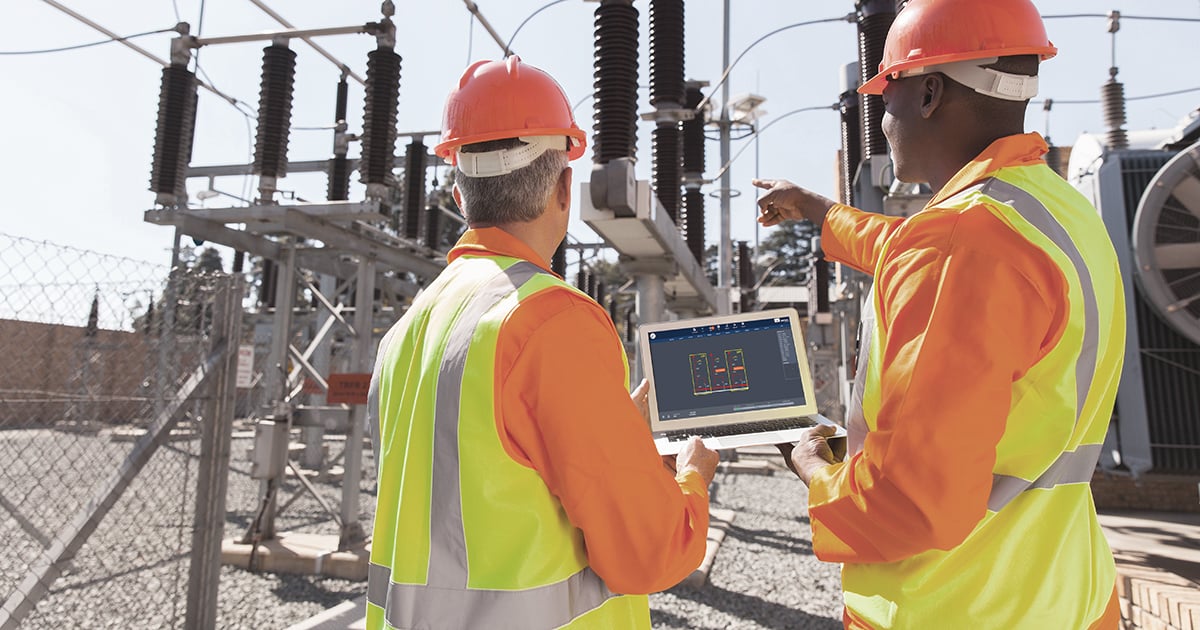Global net zero targets, growing diversification of the energy mix, and increasing demand are all highlighting the need for substations to work both smarter and harder. This, however, brings with it a unique set of challenges. While renewable energy is greener, it is inherently intermittent, meaning that supply can be unstable. Wider use of distributed energy resources can be more complex to integrate, and assets must be optimized while maintaining service and keeping costs low.
To contend with these obstacles, having the systems in place to control and regulate energy flow and handle a dynamic grid in a substation is essential. This is where HMIs can be beneficial. Modern HMIs have a broad range of capabilities to meet the shifting demands of substations. They can give a centralized view into processes across a grid and provide situational awareness.
This includes in the event of connection failures with the control center, as well as a comprehensive view of past events, alarms, and measured values. This means that the operator can easily access important information without needing to manually collect data from individual system components — which, in large air insulated high voltage substations, can be a painstaking task.
A HMI also provides even more important data during essential periodic protection relay testing, and highlights the individual statuses of each IED and their associated switch gears. This facilitates simple and straightforward testing for protection engineers, and gives a holistic overview that all equipment is operating effectively.
Implementing a HMI can also potentially reduce the amount of devices carrying out different automation tasks in a substation. The transition from hardware to software means that the HMI can integrate not just HMI tasks but others too, such as gateway and automation. In this instance, the HMI can function more as a substation controller, centralizing processes and data and creating an integrated solution without the need to exchange data between systems.
Many parameters can be incorporated into this HMI system to reduce engineering effort, including protection functions and the ability to transfer information to the control centre or to trigger automation events. Beside these runtime tasks, the HMI has some interesting secrets on the engineering side: When we want to switch from manual engineering to automatic engineering it requires standards, not only from a regulatory perspective but from an end-user perspective. Having these standards in place allows the utility to define templates and descriptions and to put them together to create ready to use HMI or automation applications. The zenon Platform from COPA-DATA has the necessary interfaces to automate a multitude of different engineering processes and steps.
Using zenon as an integrated substation automation system allows faster and more intuitive control and monitoring than systems comprising of separate parts and operating systems. This means that smart use of the platform can significantly reduce engineering efforts and save weeks of work. It can even be connected to the built-in hardware of existing equipment to substitute legacy HMI systems, allowing easy retrofitting and removing the need for costly upgrades and replacements.
Substation operators can benefit from zenon’s substation-specific package. The zenon Energy Edition contains all the features needed to engineer an efficient and fully-realized substation HMI. The edition contains an inbuilt command processor which handles the special use cases associated with operating high voltage switch gears. It provides unparalleled situation awareness with an integrated topology processor, giving the user an instant visualization of substation status and condition.
Operating a modern substation can be complex, but engineering an efficient HMI system can make the process simpler and more efficient, saving time and reducing both engineering effort and risk of error. COPA-DATA’s zenon Energy Edition provides all the tools for an integrated HMI for a smarter and more connected substation able to tackle the challenges of today’s energy industry.
Find out more here or watch our webinar recording:



